From the moment I saw the city line driving into Cape Town I felt a feeling of inspiration. Cape Town is an artsy city. Full of socially conscious ethical fashion companies, cafes filled with a rich and vibrant coffee culture, artist’s paintings, graffiti, and live reggae and jazz music. You have the mountains and the ocean, the beautiful gardens that go through the entire city filled with outdoor markets and colourful, vibrant areas like Bo-Kaap rich with history and culture.
I arrived in Cape Town at a historic time. I was able to attending a live screening of Nelson Mandela’s funeral at the grand parade. The day after his funeral I had the opportunity to walk alongside other cape town locals in the reconciliation day parade. A feeling of progression and change was in the air and it awakened and re-energized me.

I stayed at a hostel on Kloof St, a ritzy area near the bottom of table mountain and only a short walk away from the waterfront. My first day in Cape Town was spent exploring the shops along Long St and trying out ostrich burgers and South African wine at the local burger joint. As a foreigner your dollar goes a long way in South Africa and so luxurious dinners out at nice restaurants was a nice treat after 57 days of camping and cooking on a fire.
My second day in Cape Town I decided to wake up early before it got too hot outside and climb Table Mountain. The hike up only took me about an hour and a half but it was a strenuous climb. I was literally pulling myself up onto rocks and was soaking wet with sweat by the time I reached the top. It’s pretty cold on the top of the mountain, and I immediately regretted not bringing a sweater. I didn’t want anything extra weighing me down but this was clearly a rookie mistake. I was starving after the climb and decided a second breakfast at the Table Top Café wouldn’t be such a bad idea. It was also a good way to warm up while refuelling.

After eating a deliciously large breakfast for the second time that day I joined a free walking tour of the top of Table Mountain. The guide told us all about rock formation and how Table Mountain used to be underneath the ocean. Standing on the top of Table Mountain over looking the city and feeling like you are in the clouds it’s hard to believe this all used to be underwater. We also learned about all of the creatures living on the mountain including the boomslang, a big snake that was interesting to learn about but I was very happy it was no where in sight. My legs were a little sore from the climb up and to save time I opted to take the cable car down. The cable car was nothing special really. A bit crowded and stuffy but it did rotate 360 degrees so that you could get a view from all angles on the way down, however, this is only beneficial if you can push your way to the window.
When I got back to the hostel I took a much-needed shower and spent the afternoon exploring the markets along the maze of side alleys throughout the city and made my way down to the waterfront. The waterfront is stunning, full of ships, hotels, museums, and waterfront cafes with patios and umbrellas of every colour protecting coffee consumers from the bright sunshine. I ventured back to my hostel just as the sun was setting over the water and stopped to stare at the city line from the waterfront to take in the stunning views of the table mountain backdrop.

The third day was the day of the funeral. I woke up early and decided to make my way down to the Grand Parade to watch it live from the screens posted in front of city hall. As per usual I was running extremely early and decided to stop at a museum along the way. The Slave Lodge is a compound type building in a square shape with a courtyard in the middle that used to be a building where slaves lived and were forced to work for the Dutch East India Company. This was such an eye opening experience. I honestly did not know that slavery existed to the extent that it did in South Africa. When the Dutch settled in South Africa, they did not enslave the locals but rather the slaves came from East Africa, along the slave trade route to the New World or from India, Indonesia and Malaysia. The museum had a lot of information and it took a few hours to make my way through the whole building. The last exhibit was of Oliver Tambo, a longtime friend and colleague of Nelson Mandela. It paid tribute to the struggle for freedom in South Africa and in my opinion was an appropriate exhibit to have fresh in my mind as I made my way to the live viewing of Mandela’s funeral.
The Grand Parade is the area in front of city hall, a towering and extravagant colonial building made of brick. There were flowers and cards lining the fences, and crowds of people lining up to sign the guest book. It was amazing to see the numerous lives Mandela managed to touch both directly and indirectly. The duration of the funeral was filled with singing and in some cases dancing as tribute was paid to an inspiring man who saved South Africa from the brink of civil war and changed society to be more accepting and inclusive of those who suffered most during apartheid. However, Nelson Mandela’s death also brought other issues of unrest to the surface. The fact that it has been almost 20 years since the apartheid government fell and still the majority of the wealth and power is concentrated in the hands of the white minority. Although things are slowly improving it will take generations to wipe out the racism that exists in this society. Madiba’s death also brought to the surface the issue of poor leadership and corruption that the ANC has been plagued with since after Mandela’s time in office. Mbeke was a clown, and Zuma is no better. He was booed while giving a speech and Mandela’s funeral and South Africaner’s are starting to realize that there are still a lot of changes to be made. Mandela was an amazing man. He did what very few men could have done. He sacrificed his life for change and when it came time to take power, he did not take revenge against those who wronged him but rather extended his hand to them so that they could work with him to build a stronger more inclusive South Africa. Not many human beings can put aside their own hatred or desire for revenge to serve the greater good. This is exactly what Mandela did. “It always seems impossible until it’s done” Nelson Mandela rose up out of the shadows of apartheid to become one of the greatest leaders in history. These are huge shoes to fill and his successors have not even come close.
This was a holiday that Mandela himself had implemented and it reflected one of his most important policies, reconciliation. Reconciliation is and was crucial in order to stop pointing fingers and seeking revenge and finally let the healing begin. I decided that I would join in on the festivities and It was a pleasure to walk alongside the residents of Cape Town in the Parade. From every corner of the city they came, black, white, young, old, big and small to walk together and celebrate the progression of their beautiful country. There was music and dancing on every corner and residents all danced together.
The afternoon was spent exploring Robben island where Nelson Mandela was imprisoned for 18 years. The tour of Robben Island consists of two parts. First, the tour of the island and the small town that exists on it. Second, the tour of the prison. The second part of the tour is guided by an ex-political prisoner that spent time at that prison. It was surreal to actually see the cell where Mandela spent 18 years of his life. It was extremely small and cramped and for the first few years all he had to sleep on was a blanket on the floor. The climate on the island is extremely hot during the day and very cold at night. Black inmates were only issued shorts degrading them further as they were seen as “boys” and not men while “coloured” or Indian inmates had the privilege of wearing long pants. Whites were not allowed to be kept on Robben Island. The prison guards could only be white. When I was in the yard of the prison I tried to imagine how stressful it would have been to be held prisoner here. White prison guards who hate you because you are different from them, with vicious dogs and big guns, ordered to shoot you on the spot if you tried to escape, your every move interpreted as hostile and you were constantly being watched. How Mandela kept his spirit up during those 18 years is a miracle in itself. We got to view the quarry where the prisoners were forced to do hard labor by cutting limestone and moving it from one end of the quarry to the other. The tiny cave that the inmates were forced to use as a latrine that served as a place for secret meetings where parts of the countries new constitution would be drafted on its walls. Many of the inmates including Mandela suffered permanent damage to their eyes from being forced to work in these conditions for so many years. The most frustrating part for me would have been being forced to look at the view of Cape Town each day. Although stunning, it would have served as a constant reminder that your family was close enough to touch yet just out of your reach. That ultimately you were not in control of your own fate and although you can see the place they inhabit daily you may never see them again. I sat quietly and reflected on these thoughts during my long ferry ride back to the mainland, table mountain becoming closer and closer with each passing moment.

I spent my days in Cape Town exploring Cafes, drinking coffee, writing, wandering through the markets, going to museums and art galleries and exploring the city. Once vibrant and notable place to go and see would be Bo-Kaap. Bo-Kaap a township that is made up mostly of the descendants of Malay slaves. During slavery, slaves were not allowed to express themselves in any way. They were forced to wear dark drab colours that would not allow them to show any hint of personality. When slavery finally ended, the muslim quarter of this township painted their houses in bright colourful shades in a form of silent rebellion against their oppressors. You can’t help but feel a sense of revolution and inspiration coursing through your veins as you walk through these streets of quiet rebellion.
To date, Cape Town is one of if my one favourite city on this planet. I would move there in a moment if the opportunity presented itself. If you get a chance to visit South Africa take it! It’s an amazingly beautiful country.
 Contributor: Brittany Hemming
Contributor: Brittany Hemming
Instagram | Facebook | Twitter
Brittany is the founder of Stay Curious Darling, a Travel and Lifestyle Blog focused on sustainable fashion, women’s empowerment and ethical tourism. She is currently wandering the world empowering others.



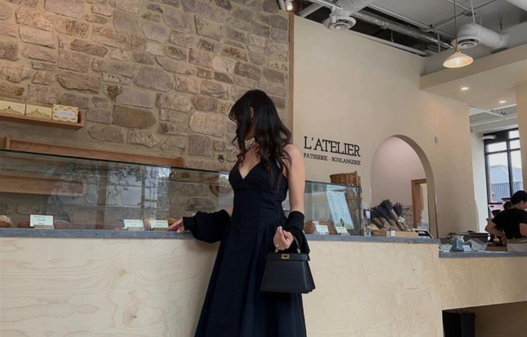
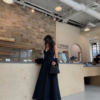
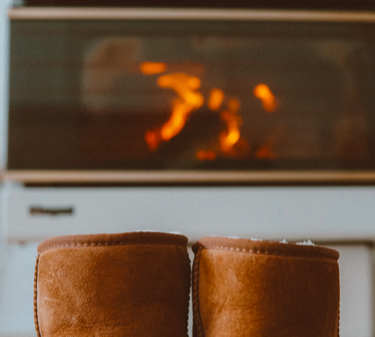

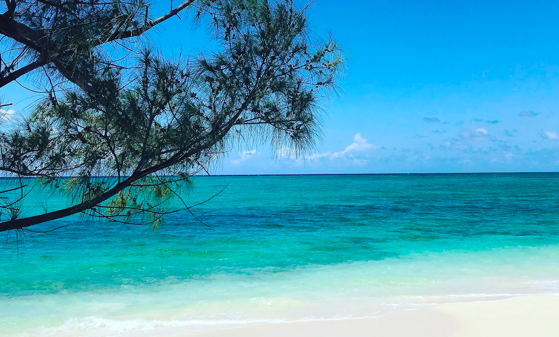
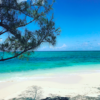
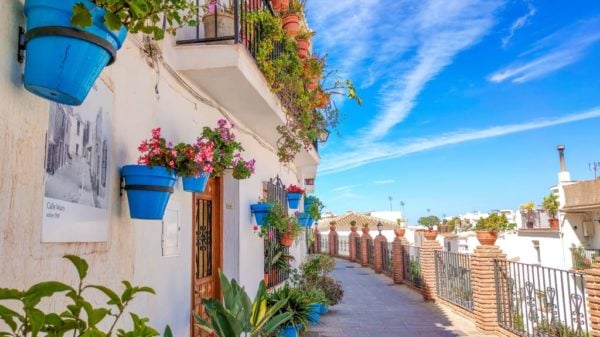
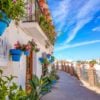

You must be logged in to post a comment Login